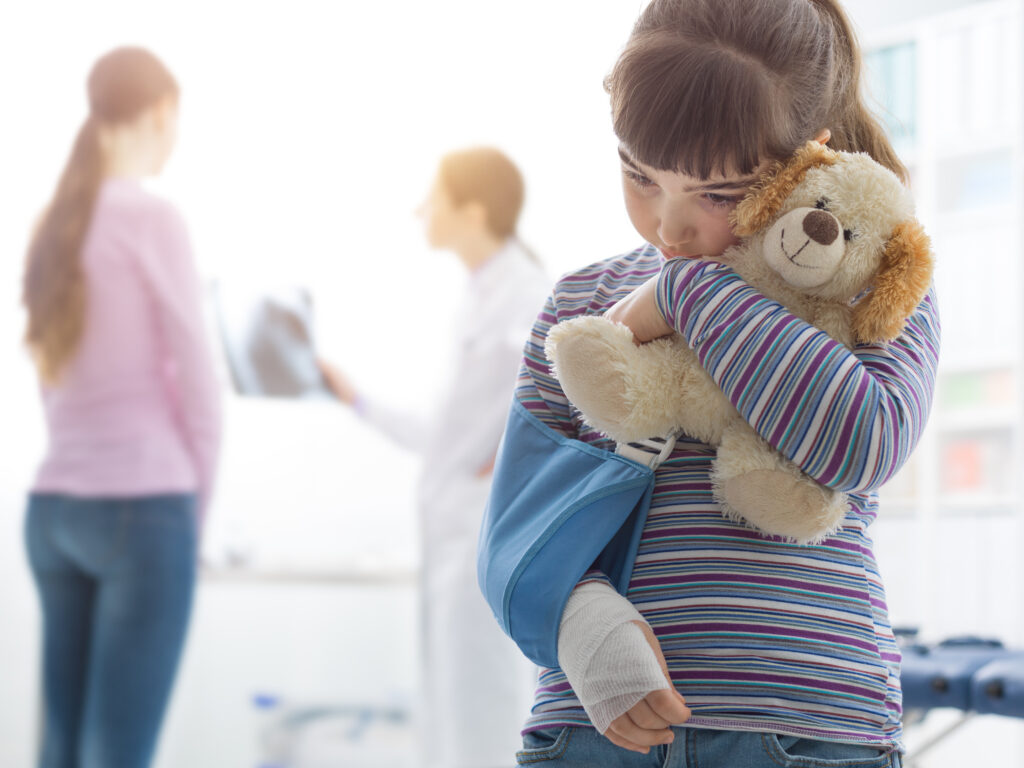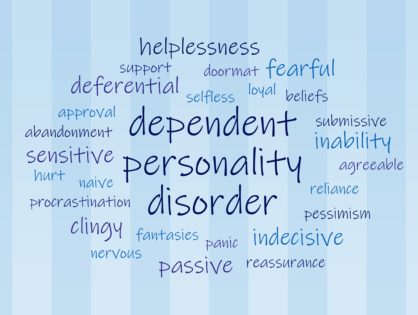Trauma-informed care for children is a vital approach that recognizes the impact of adverse experiences on children's mental, emotional, and physical well-being. Childhood trauma can result from various sources, including abuse, neglect, domestic violence, natural disasters, accidents, or loss of a loved one. By adopting a trauma-informed approach, caregivers, educators, and healthcare professionals can create safe and supportive environments that promote healing, resilience, and recovery for children who have experienced trauma. Here's an in-depth exploration of trauma-informed care for children:
Understanding Childhood Trauma:
Understanding childhood trauma is crucial for providing effective support and intervention for children who have experienced adverse experiences. Childhood trauma refers to any event or series of events that cause overwhelming stress or harm to a child's physical or emotional well-being. These experiences can have lasting effects on a child's development, behavior, and mental health. Here's a detailed exploration of understanding childhood trauma:
Types of Childhood Trauma:
Physical Abuse:
Involves intentional harm or injury inflicted on a child by a caregiver or authority figure.
Examples include hitting, punching, kicking, burning, or shaking a child.
Sexual Abuse:
Involves any form of sexual contact or exploitation perpetrated against a child.
Examples include molestation, rape, sexual assault, or exploitation through pornography.
Emotional Abuse:
Involves verbal or psychological abuse that undermines a child's self-esteem, sense of worth, or emotional well-being.
Examples include belittling, ridiculing, threatening, or gaslighting a child.
Neglect:
Involves the failure of caregivers to provide for a child's basic needs, including food, shelter, clothing, medical care, supervision, or emotional support.
Examples include chronic neglect, abandonment, or lack of emotional nurturing.
Domestic Violence:
Involves witnessing or experiencing violence between caregivers or family members.
Examples include physical assault, verbal threats, or emotional manipulation within the home.
Community Violence:
Involves exposure to violence or traumatic events in the community, such as shootings, gang violence, or natural disasters.
Examples include witnessing violence in the neighborhood, school, or community settings.
Loss or Separation:
Involves the death of a loved one, parental divorce, or separation from a primary caregiver.
Examples include grief and loss associated with the death of a family member, divorce, or foster care placement.
Impact of Childhood Trauma:
Physical Health Effects:
Adverse childhood experiences (ACEs) can increase the risk of physical health problems later in life, including chronic illnesses, autoimmune disorders, and cardiovascular diseases.
Trauma can dysregulate the body's stress response system, leading to increased inflammation, immune system dysfunction, and heightened vulnerability to illness.
Emotional and Psychological Effects:
Childhood trauma can have profound effects on a child's emotional and psychological well-being, leading to symptoms of anxiety, depression, post-traumatic stress disorder (PTSD), and other mental health disorders.
Trauma can impact a child's self-esteem, sense of safety, and ability to trust others, resulting in difficulties forming and maintaining relationships.
Behavioral Effects:
Children who have experienced trauma may exhibit a range of behavioral problems, including aggression, defiance, impulsivity, self-destructive behavior, substance abuse, or risky behaviors.
Trauma can affect a child's ability to regulate emotions, cope with stress, and engage in adaptive behaviors, leading to challenges in academic, social, and familial settings.
Cognitive Effects:
Childhood trauma can impair cognitive functioning, attention, and memory, impacting a child's ability to learn, concentrate, and perform academically.
Trauma can disrupt brain development, particularly in areas associated with executive functioning, emotional regulation, and decision-making.
Interpersonal Effects:
Trauma can affect a child's ability to form secure attachments, communicate effectively, and establish healthy boundaries in relationships.
Children who have experienced trauma may struggle with intimacy, trust, and vulnerability, leading to difficulties in forming and maintaining interpersonal connections.
Trauma Response and Coping Mechanisms:
Fight, Flight, or Freeze Response:
Children may respond to trauma with the instinctual fight, flight, or freeze response, which involves either fighting back, fleeing from the situation, or becoming immobilized and unable to act.
These responses are adaptive survival mechanisms designed to protect the child from harm in threatening situations.
Dissociation:
Children may dissociate or mentally detach from traumatic experiences as a way to cope with overwhelming stress or pain.
Dissociation can involve feeling numb, disconnected, or detached from one's thoughts, emotions, or physical sensations.
Avoidance Behaviors:
Children may engage in avoidance behaviors to cope with reminders of trauma, such as avoiding places, people, or activities associated with the traumatic event.
Avoidance behaviors can provide temporary relief from distress but may interfere with the child's ability to process and heal from the trauma.
Hyperarousal and Hypervigilance:
Children may experience hyperarousal or hypervigilance, characterized by heightened sensitivity to potential threats, increased anxiety, and difficulty relaxing or sleeping.
Hyperarousal and hypervigilance are common symptoms of PTSD and can interfere with the child's ability to feel safe and secure in their environment.
Principles of Trauma-Informed Care:
Principles of trauma-informed care provide a framework for creating environments that promote healing, safety, and empowerment for individuals who have experienced trauma. These principles guide caregivers, educators, healthcare professionals, and other service providers in delivering compassionate and effective support to trauma survivors. Here's an in-depth exploration of the key principles of trauma-informed care:
Safety: Safety is the foundational principle of trauma-informed care. It involves creating physical, emotional, and psychological environments where individuals feel secure, protected, and free from harm. Safety encompasses both physical safety—ensuring that individuals are protected from threats or danger—and emotional safety—creating an atmosphere of trust, respect, and non-judgment where individuals feel comfortable expressing themselves and sharing their experiences.
Trustworthiness: Trustworthiness involves building trusting and reliable relationships with trauma survivors based on honesty, transparency, and consistency. Trustworthiness requires caregivers and service providers to demonstrate integrity, authenticity, and accountability in their interactions with trauma survivors. Establishing trust is essential for fostering a sense of safety and empowerment and for promoting collaboration and partnership in the healing process.
Empowerment: Empowerment involves honoring the autonomy, agency, and voice of trauma survivors, allowing them to make informed choices and participate actively in their care and recovery. Empowerment emphasizes the importance of respecting individuals' rights, preferences, and boundaries, and providing them with opportunities to exercise control and self-determination. By empowering trauma survivors, caregivers and service providers can help restore their sense of agency, dignity, and self-efficacy.
Collaboration: Collaboration emphasizes the importance of working collaboratively with trauma survivors, families, and communities to address their needs, preferences, and goals. Collaboration involves building partnerships and networks of support among caregivers, service providers, and community resources to ensure coordinated and holistic care. By fostering collaboration and communication, trauma-informed care promotes continuity of care, reduces fragmentation, and enhances the effectiveness of interventions.
Cultural Sensitivity: Cultural sensitivity involves recognizing and respecting the cultural, ethnic, and individual diversity of trauma survivors and tailoring care to meet their unique needs, values, and beliefs. Cultural sensitivity requires caregivers and service providers to acknowledge their own biases and assumptions and to approach trauma survivors with humility, curiosity, and openness. By incorporating cultural perspectives and practices into care, trauma-informed providers can enhance the relevance, accessibility, and effectiveness of interventions.
Resilience: Resilience emphasizes the strengths, resources, and adaptive capacities of trauma survivors and their communities in coping with and overcoming adversity. Resilience-focused care acknowledges that trauma survivors possess inherent strengths and resilience factors that can support their recovery and growth. By fostering a strengths-based approach, trauma-informed care promotes resilience-building activities, coping strategies, and skill development to help trauma survivors thrive in the face of challenges.
These principles of trauma-informed care guide caregivers, educators, healthcare professionals, and other service providers in creating environments that promote healing, empowerment, and resilience for trauma survivors. By embodying these principles in their practices and interactions, professionals can help trauma survivors feel safe, respected, and supported as they navigate their healing journey. Through compassionate and trauma-informed care, individuals can reclaim their sense of agency, dignity, and hope, and move forward towards a brighter and more empowered future.

Recognizing Signs of Childhood Trauma:
Recognizing signs of childhood trauma is essential for early identification and intervention, enabling caregivers, educators, and healthcare professionals to provide appropriate support and resources to children in need. Childhood trauma can manifest in various ways, impacting a child's behavior, emotions, relationships, and overall well-being. Here's an in-depth exploration of how to recognize signs of childhood trauma:
Behavioral Signs:
Aggression or Acting Out: Children who have experienced trauma may exhibit aggressive behavior, such as hitting, biting, or yelling, as a way to cope with feelings of fear, anger, or powerlessness.
Withdrawal or Isolation: Traumatized children may withdraw from social interactions and isolate themselves from others, preferring to spend time alone rather than engaging with peers or family members.
Regression: Trauma can cause regression in behavior, leading children to revert to earlier developmental stages or behaviors, such as bedwetting, thumb sucking, or clinging to caregivers.
Hyperactivity or Impulsivity: Some traumatized children may display hyperactive or impulsive behaviors, such as restlessness, fidgeting, or difficulty sitting still, as a manifestation of their heightened stress levels.
Avoidance: Children who have experienced trauma may avoid situations, places, or people that remind them of the traumatic event, preferring to steer clear of triggers that evoke distressing memories.
Self-Harm or Risky Behavior: Traumatized children may engage in self-destructive behaviors, such as cutting, substance abuse, or reckless behavior, as a way to cope with overwhelming emotions or numb emotional pain.
Emotional Signs:
Anxiety or Fearfulness: Trauma often leads to feelings of anxiety, hypervigilance, or constant fearfulness, as children struggle to feel safe and secure in their environment.
Depression or Hopelessness: Children who have experienced trauma may exhibit symptoms of depression, including sadness, tearfulness, low mood, or feelings of hopelessness about the future.
Mood Swings: Trauma can cause mood instability and rapid mood swings, with children alternating between periods of irritability, anger, sadness, and emotional numbness.
Difficulty Trusting Others: Trauma can erode a child's trust in others, leading to difficulties forming and maintaining relationships, expressing emotions, and seeking support from caregivers or authority figures.
Emotional Numbing: Some traumatized children may experience emotional numbing or detachment from their feelings, appearing apathetic, indifferent, or emotionally flat in response to stressors or triggers.
Cognitive Signs:
Difficulty Concentrating: Trauma can impair a child's ability to concentrate, focus, or pay attention, leading to academic difficulties, learning challenges, or poor performance in school.
Memory Problems: Traumatized children may struggle with memory problems, including difficulty recalling details of traumatic events or difficulty retaining new information due to cognitive disruptions.
Negative Self-Perception: Trauma can negatively impact a child's self-esteem and self-image, leading to feelings of worthlessness, shame, or self-blame for the traumatic event.
Hypervigilance: Some traumatized children may exhibit hypervigilance or heightened alertness to potential threats, constantly scanning their environment for signs of danger or harm.
Physical Signs:
Sleep Disturbances: Trauma can disrupt sleep patterns, leading to difficulties falling asleep, staying asleep, or experiencing restful sleep, resulting in fatigue, irritability, or daytime sleepiness.
Somatic Complaints: Traumatized children may experience physical symptoms such as headaches, stomachaches, muscle tension, or other somatic complaints without a clear medical cause.
Changes in Appetite: Trauma can affect a child's appetite, leading to changes in eating habits, such as increased or decreased appetite, comfort eating, or food avoidance as a coping mechanism.
Heightened Arousal: Trauma may cause heightened physiological arousal, including increased heart rate, rapid breathing, sweating, or trembling, in response to stressors or triggers.
Interpersonal Signs:
Attachment Issues: Traumatized children may exhibit attachment issues, such as difficulty forming secure attachments with caregivers, separation anxiety, or ambivalent or disorganized attachment styles.
Social Withdrawal: Some traumatized children may withdraw from social interactions, avoidant or distrustful of peers and adults, preferring solitude or isolation over social engagement.
Regressive Behaviors: Trauma can manifest in regressive behaviors in social settings, with children reverting to younger or more immature behaviors, such as baby talk, tantrums, or clinging to caregivers.
Aggression or Violence: Traumatized children may express
Healing Childhood Trauma:
Healing childhood trauma requires a comprehensive and multidisciplinary approach that addresses the child's physical, emotional, and psychological needs. Key components of trauma-informed care for children include:
Therapeutic Interventions: Provide trauma-focused therapies, such as cognitive-behavioral therapy (CBT), play therapy, art therapy, or trauma-focused cognitive restructuring, tailored to the child's age, developmental stage, and individual needs.
Safety Planning: Develop safety plans and crisis interventions to address immediate threats or triggers, ensuring the child's physical and emotional safety.
Supportive Relationships: Foster supportive relationships with caregivers, educators, and other trusted adults who can provide stability, validation, and unconditional support to the child.
Skill-Building: Teach coping skills, emotion regulation strategies, and social-emotional learning techniques to help children manage stress, anxiety, and difficult emotions.
Trauma-Informed Schools: Create trauma-informed school environments that promote safety, predictability, and positive relationships, incorporating trauma-sensitive practices into classroom management, discipline, and academic support.
Community Resources: Connect children and families with community resources, such as mental health services, support groups, advocacy organizations, and crisis hotlines, to ensure ongoing support and access to care.
Holistic Approaches: Consider holistic approaches to healing, including mindfulness, yoga, nature therapy, and expressive arts, which can complement traditional therapeutic interventions and promote overall well-being.
Conclusion:
Recognizing signs of childhood trauma is a critical first step in providing timely and appropriate support to children who have experienced adverse experiences. By understanding the behavioral, emotional, cognitive, physical, and interpersonal signs of trauma, caregivers, educators, and healthcare professionals can identify children in need of intervention and provide them with the support and resources they require to heal and thrive.
Early identification of childhood trauma allows for timely intervention and the implementation of trauma-informed care approaches that prioritize safety, trustworthiness, empowerment, collaboration, cultural sensitivity, and resilience. By adopting trauma-informed principles and practices, professionals can create environments that promote healing, resilience, and recovery for traumatized children, helping them to rebuild their sense of safety, trust, and well-being.
In conclusion, recognizing signs of childhood trauma is not only essential for identifying children in need of support but also for creating trauma-informed systems of care that foster healing and resilience. By working together to recognize and address childhood trauma, we can create a brighter and more hopeful future for all children, where they feel safe, supported, and empowered to overcome adversity and reach their full potential.
Related Articles:
Eco-Anxiety in Children: Addressing Fear and Anxiety About Climate Change
The Rise of Perfectionism in Children: Helping Kids Cope with Unrealistic Standards
Cultural Sensitivity in Child Counseling: Understanding and Respecting Diversity
Counseling in Schools: The Role of School Counselors in Supporting Children’s Mental Health
Parenting in the Digital Age: Balancing Screen Time and Real Life



